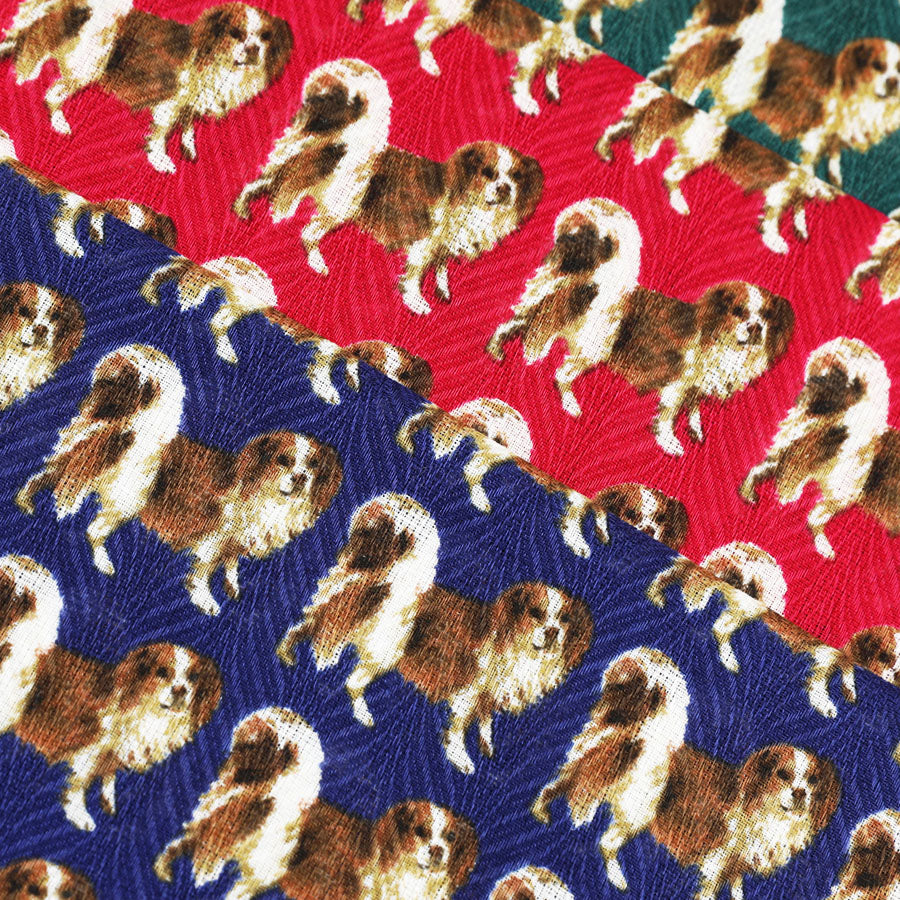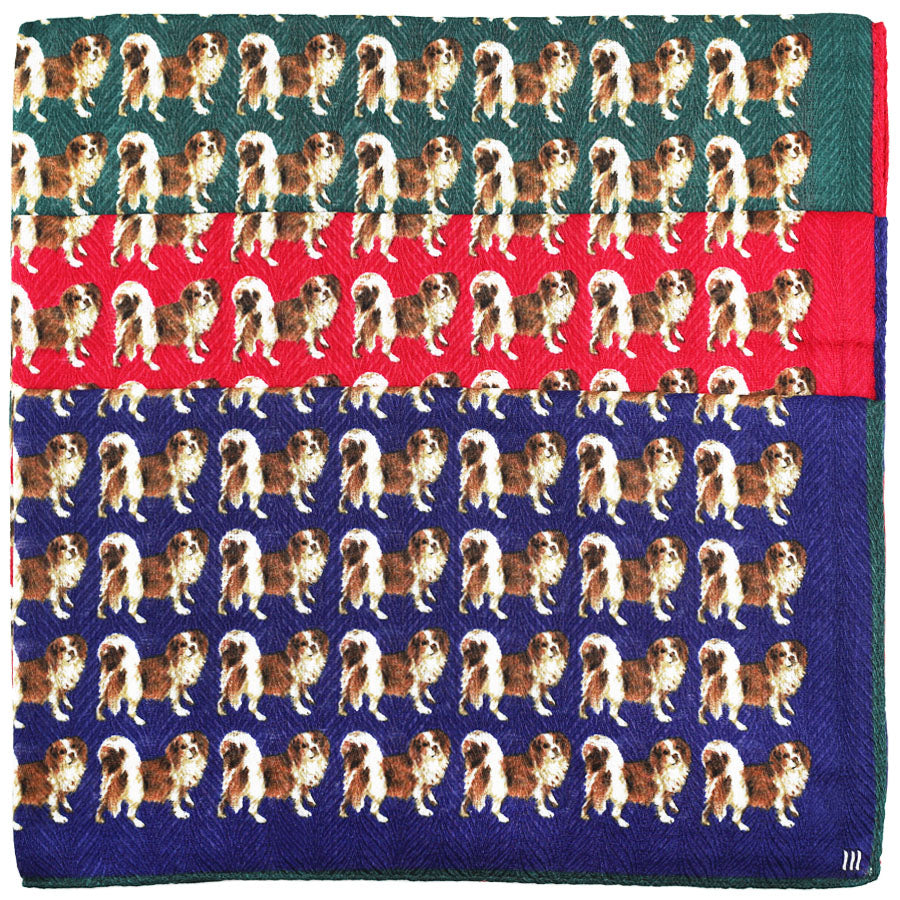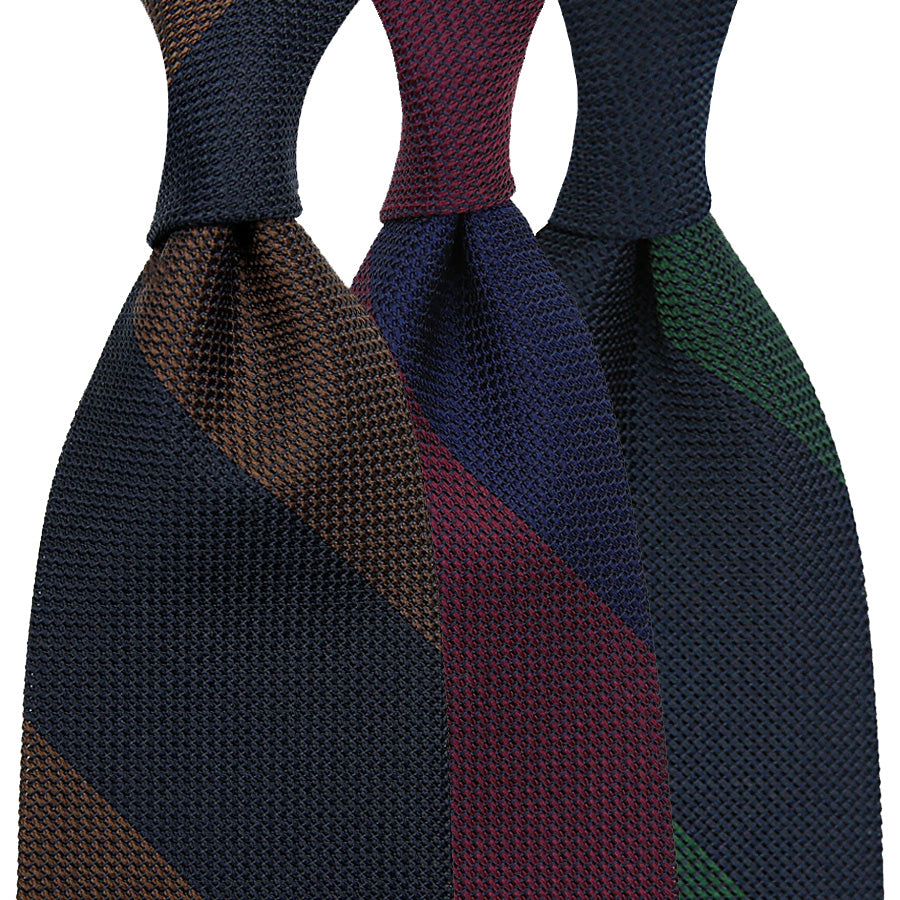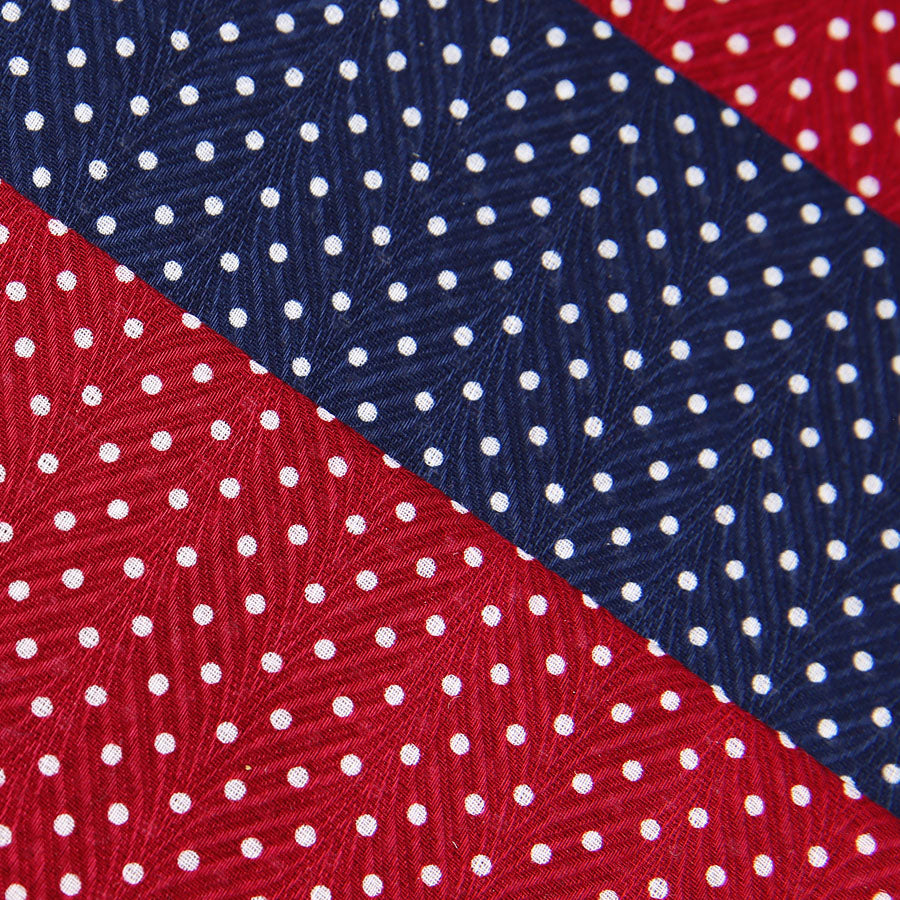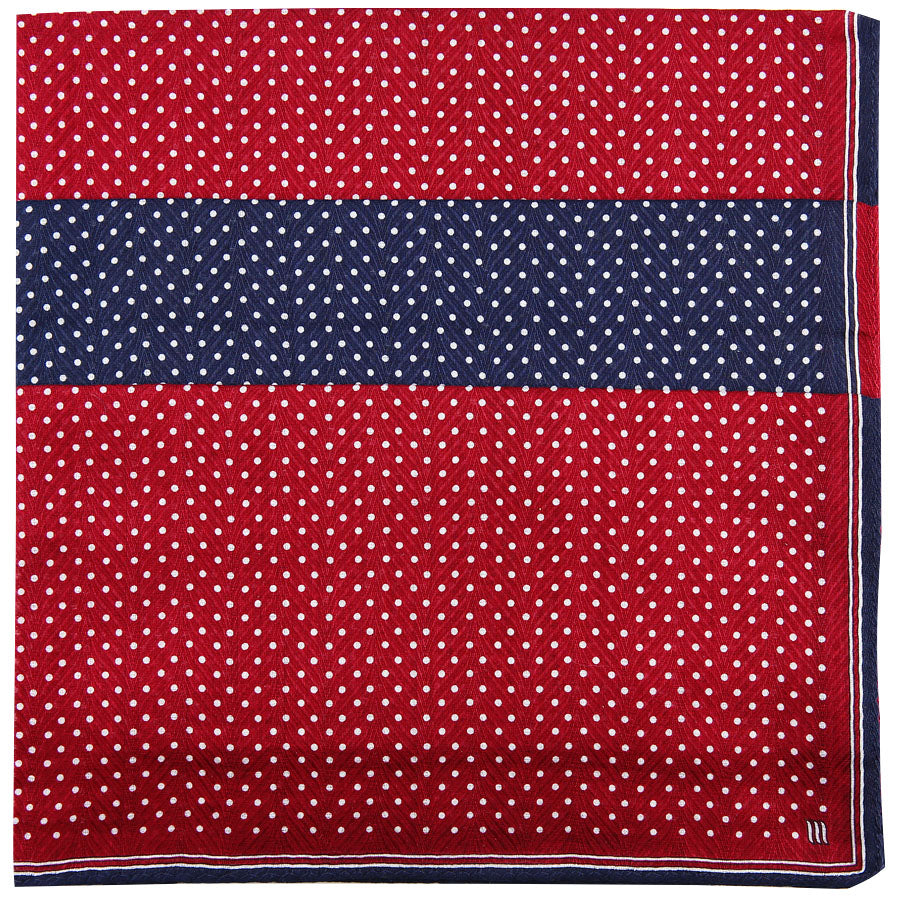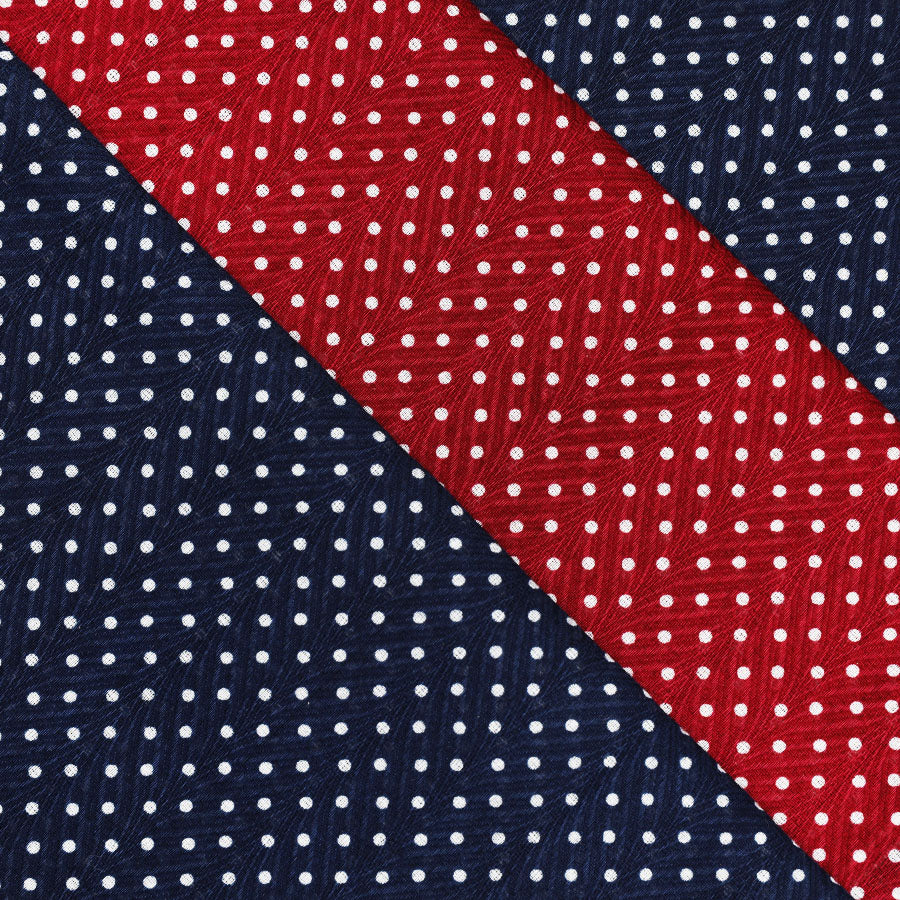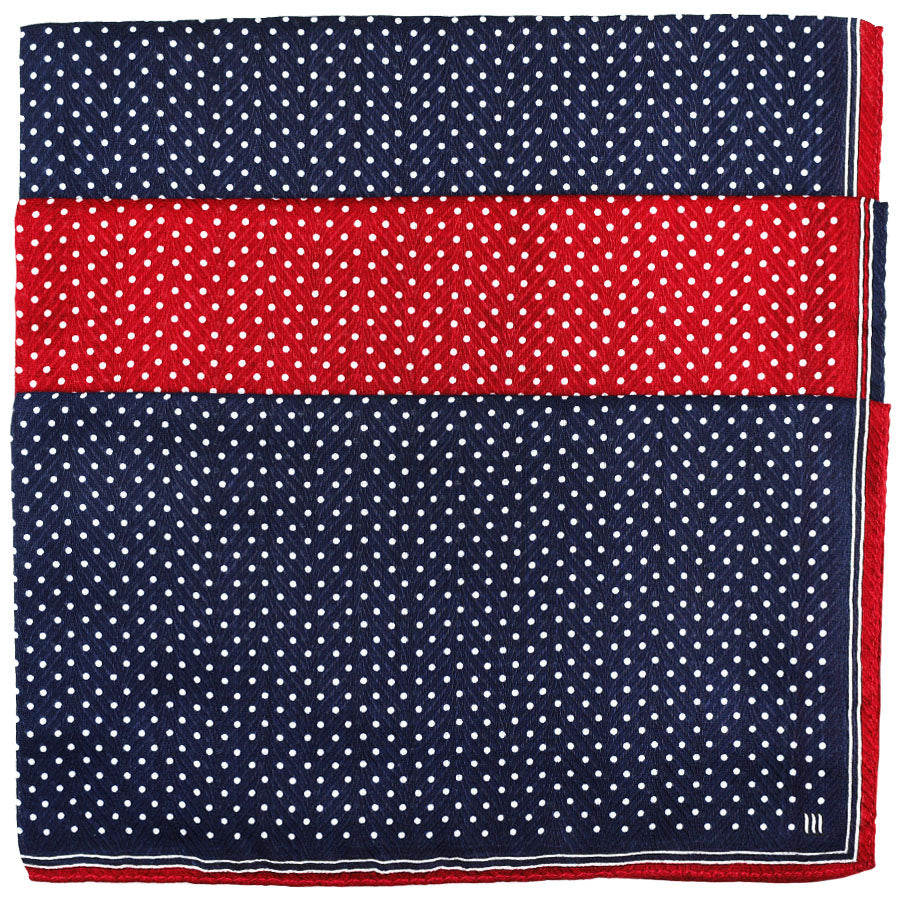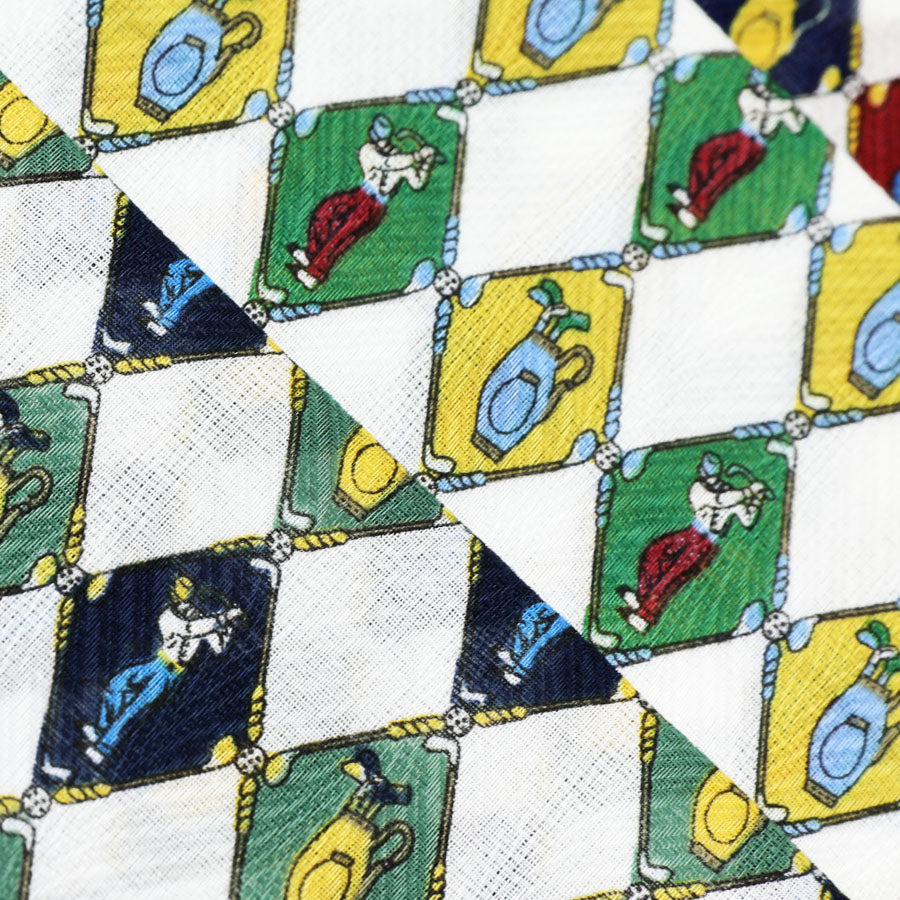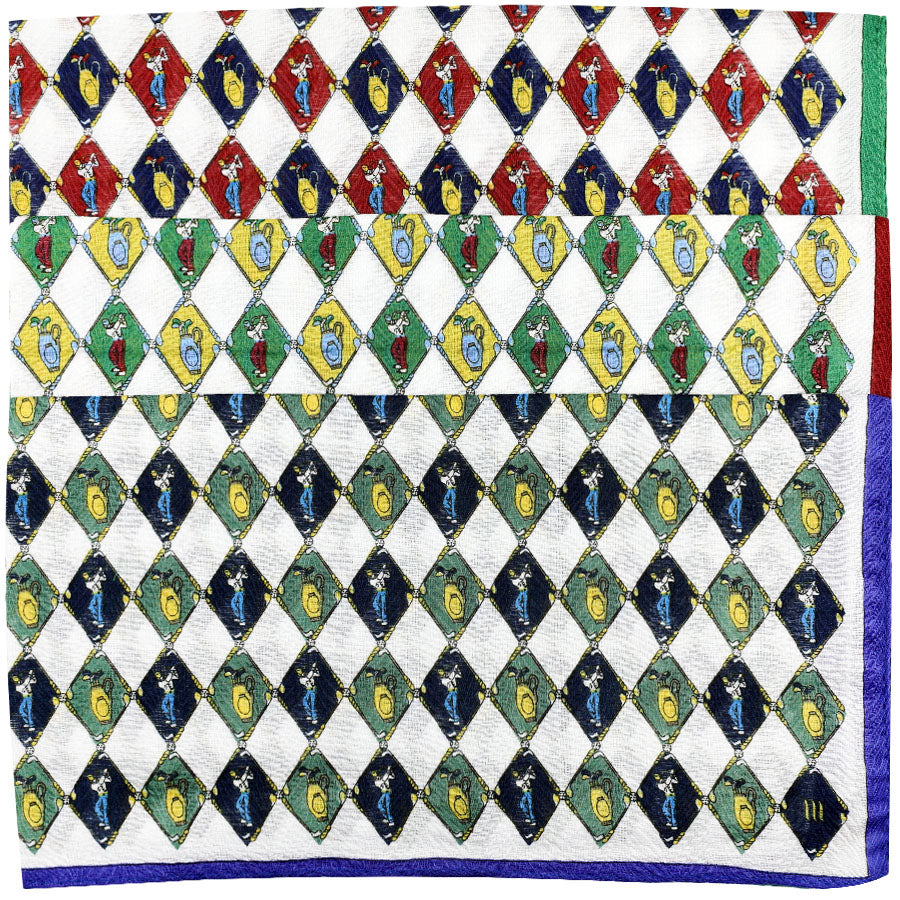There are three characteristics that define what we today understand as a ‘Real Ancient Madder Tie’: printing method, gum twill and motif.
There is some confusion as to what constitutes what: for example, the dusty hand/dull finish of traditional madder ties doesn’t come from the printing method itself but from the kind of silk madder is usually printed on: gum twill. You can print on gum twill and don’t use madder colors or you can use madder colors and don’t print on gum twill; but usually, these two come together.
'Madder’ is the colloquial name for the Rubia tinctorum plant, a main ingredient of the coloring process. It has been used since ancient times for royal garments, hence the 'ancient’ in 'ancient madder’. Gum twill silk is a kind of fabric where the silk is boiled to remove its natural gum (an organic residue), then dyed, then bathed in a gum-based solution to give it its characteristic soft hand and dusty finish. This printing method is also responsible for the colors: the silk is dyed a deep indigo first and all other colors on top of it. This results in a specific color palette (very bright colors obviously aren’t possible) and a blueish backside of the silk, a madder trademark easily identifiable on untipped ties.
Lastly, the choice of motif: there is a certain kind of classic, almost vintage print often associated with madder ties, like the large paisley or the 'aztec’ print above. While these do go very well with the aesthetic of these beautiful ties, one could print almost any motif with this method. But since classic menswear is very much about a fresh interpretation of certain archetypes, we opted for the perfect balance between the charms of old and contemporary sensibilities, resulting in the beautiful madder ties we carry at Shibumi today.


